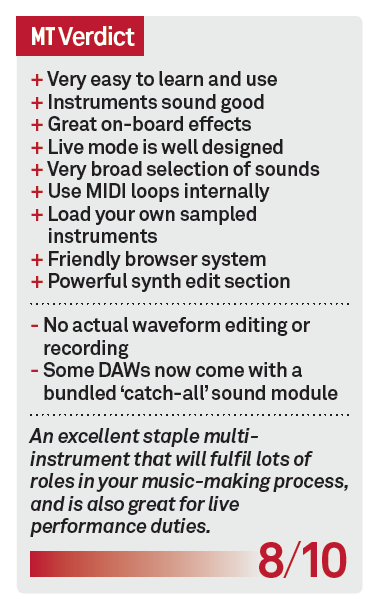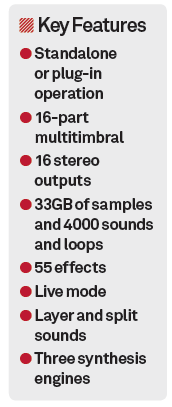IK Multimedia SampleTank 3 Review
It’s been a long time coming, but was it worth the wait? Hollin Jones lifts the lid on SampleTank 3… Details Price €239.99 Crossgrade from any paid IK product, €159.99 Contact +44 (0)1223 234414 Web – www.ikmultimedia.com Minimum System Requirements – OS X 10.7 or higher – Windows 7 or higher – 34GB hard drive space – […]
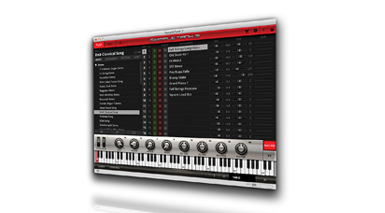
It’s been a long time coming, but was it worth the wait? Hollin Jones lifts the lid on SampleTank 3…

Details
Price €239.99
Crossgrade from any paid IK product, €159.99
Contact +44 (0)1223 234414
Web – www.ikmultimedia.com
Minimum System Requirements – OS X 10.7 or higher – Windows 7 or higher – 34GB hard drive space – 4GB RAM
SampleTank was one of IK Multimedia’s first products, and helped to pioneer the use of sample-based ‘real’ instruments in the music technology world. In the ten years since version 2 was released, technology has sprinted forward and there are now countless virtual instruments that use samples to generate sound. The question then becomes, what does this new version of SampleTank bring to the party? The short answer is: quite a lot.
What’s New?
Re-engineered as a 64-bit app, SampleTank 3 still works in standalone mode or as a plug-in. Its operation is broadly the same in both modes, except that when run as a plug-in it will sync to the master host tempo and integrate its 32 available outputs into your DAW’s mixer. In standalone mode it can route these outputs to physical channels on your audio interface.
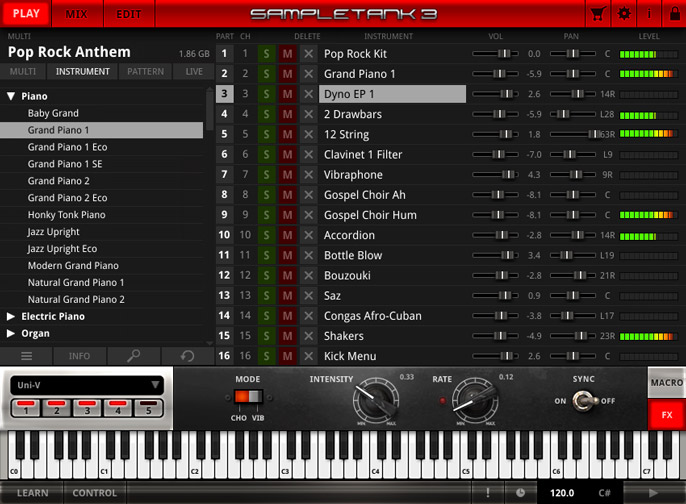
The full content install is a hefty 33GB but you can direct these files to a secondary or external hard drive during the installation process. You can load your own sampled instruments into SampleTank provided the files have been correctly edited and named, although it doesn’t have any native audio recording capability of its own.
As you might expect after such a long gap between versions, SampleTank 3 has a new interface that prioritises workflow and utility over the slightly more showy metal effect of version 2. There are three main sections: Play, Mix and Edit. In the Play section you can select from the 4000 instruments and loops, which are divided into 21 categories and include 2500 drum and percussion loops, and 2000 MIDI files which can be dragged and dropped onto keys for triggering.
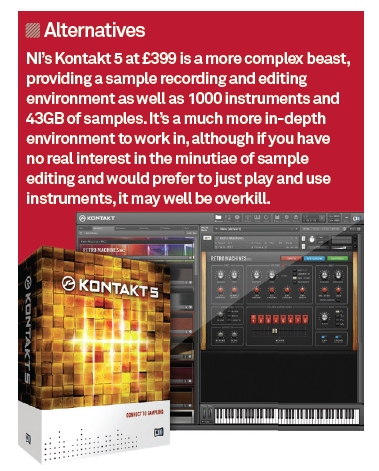
Quick Controls
The 16 parts appear on the right-hand side of the window and can either be assigned unique MIDI channels or can share channels for the purposes of layering: put a pad and a piano together, for example, and you can alter volume and pan quickly. Instruments are searchable by type (multi, instrument and pattern) and there’s also a Live mode where you can set up groups of instruments and effects and then flip between live setups with a single click, which is ideal for performing.
At the base of the window is a virtual keyboard and a master control panel where you can control the zoning of instruments and also access MIDI learn and quick control assignment.
There’s a Macro panel that provides quick access to the key parameters of any sound, and an FX panel where you can assign any of the 55 bundled effects derived from the AmpliTube and T-RackS apps. There are five slots per sound and the choice is good, including amp sims, dynamics, EQ, reverbs, delays and more.
The Mix section provides a good selection of controls that enable you to blend the 16 channels, route their outputs individually, and manage insert slots and panning. The master channel has five effect slots, too, for processing the main outs. The Edit section enables you to access the three synthesis engines (STRETCH, PS/TS and resampling), which control the way the samples are processed for playback.
You can tweak a whole range of things here including sample stretching, LFOs, filters, tuning, envelopes, polyphony, transposition and more, and there’s a useful part chooser on the right for navigation. The use of synthesis alongside the sampled sounds means you can sculpt and shape timbres much more than you might imagine.
Sounds Good?
SampleTank 3 provides a very broad selection of sounds to work with and these are, by and large, very good, from stately grand pianos through fat synths, heavy drums, rumbling basses and orchestral instruments. Thanks to the quality of the samples and the on-board effects, processing the instruments generally works very well and provides an excellent pool of textures from which to build up tracks. Above all, it’s easier to use than before thanks to the streamlined interface and some nice design touches.
Novice users shouldn’t have trouble figuring out how to get started with SampleTank 3 and for the more adventurous, macros and the edit section provide more in-depth control. Although useful as a go-to sound source for all sorts of projects it’s important to note that this is also designed to be used for gigs via its Live mode, which takes a lot of the hassle out of creating and using split and layered multi-patches on stage.
While it’s true that there’s perhaps nothing really cutting edge here in terms of sounds, what you do get is a polished and competent instrument to form the basis of a really solid studio setup.
